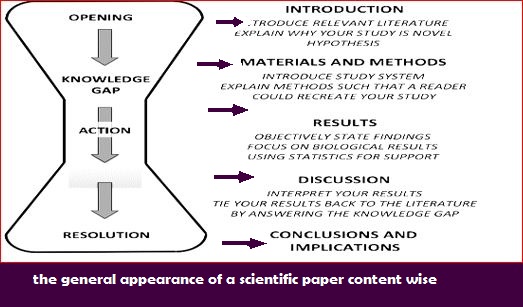For you to successfully complete a scientific course you definitely have to do some writing in a form of a report, or proposals or any other assignment. Scientific writing differs in some way from the writings in the other disciplines because it involves writing what others have previously found out concerning the matter at hand and what you’ve found in your own research. For starter, you can check biology thesis examples.
Scientific writing consists of:
- Introduction
- Hypothesis
- Methods
- Results
- Discussion
Before you embark on your bench work, do a thorough literature search of the gap your work is to fill, then come up with an outstanding way to express your idea to your target audience.
Introduction
This is the section that explains what the paper is all about. It should give the background information with respect to your topic and vividly explain the question at hand. Here you ought to precisely review the literature that exclusively suits your current research and state how relevant your work will be in filling the knowledge gap you identified. Don’t include all your findings in this section. Citing is paramount following the format “(Author(s), publication year)”when referencing.

As you try to explain the gap your research is to fill you should draw your hypothesis from there.
Hypothesis
As you state your hypothesis you should be able to bring out the problem you are trying to solving. Also briefly state how you carried out your experiment.
Methods and Materials
This is the most direct section because you capture what you did in your experiments. For a more organized out put you can subdivide it to smaller sections like collection of samples and the actual experiments. It show that you’ve employed scientifically approved procedures and that if repeated by a different person the results wouldn’t differ. So you should your procedures in a paragraph including the conditions in which the experiments were carried out and the mathematical engagements involved. Remember to cite borrowed procedures and use past tense language.
Here you state your findings. You should first figure out the best way to present your findings i.e.; which kind of table and graph to use. Then give a sentence or two describing this figures in relation to your results. In your description be sure to bring out the biological meaning of the results
Discussion and Conclusion
Your discussion section should bind the introduction and the results. You can do this by restating the question you are tackling as it is in your introduction then you major finding. Then explain the role your work played in answering the question.
In your conclusion, give the importance of your study and the questions that arose from your work. Give the shortfalls of your study in this section.
Be sure that there is a good flow in you report and that you get rid of all grammatical, spelling and any other kind of errors
Conclusion
It is my hope that you found this guide insightful.

Leave a Reply